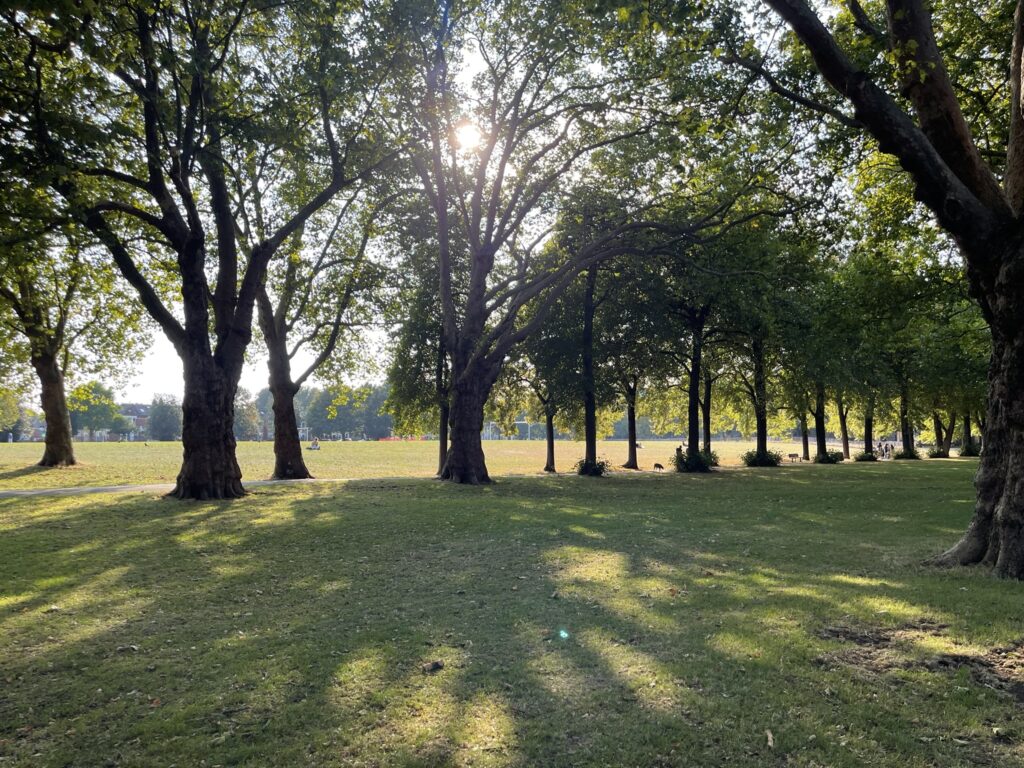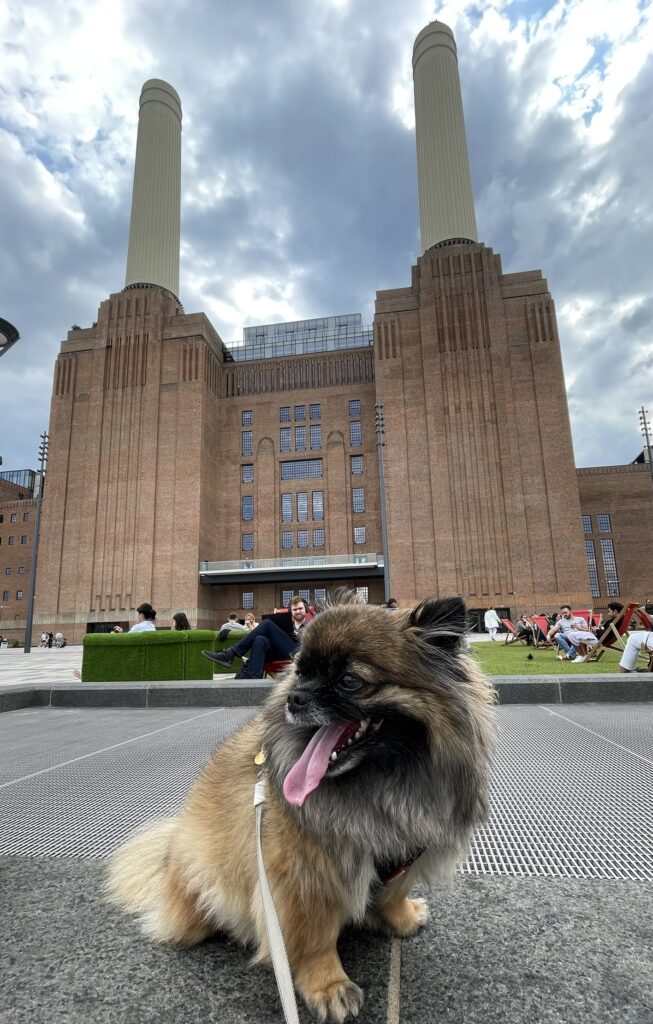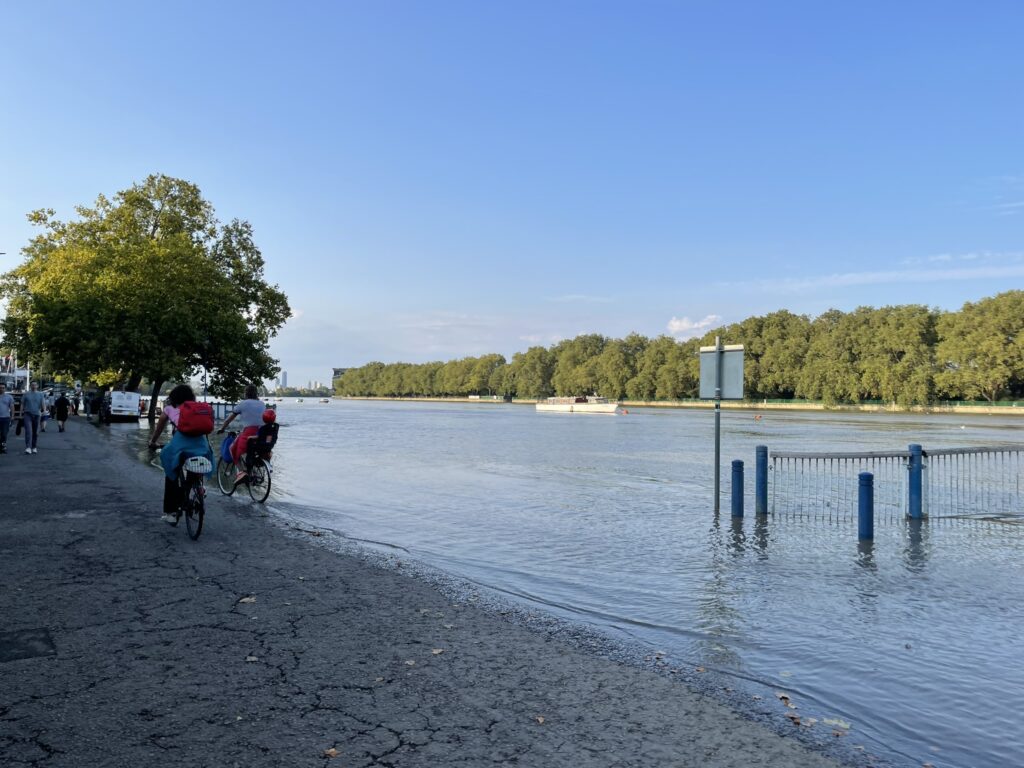Total Distance: 5.8 miles
Time: 3 hours 30 mins
Points of Interest:
Battersea Park
The London Peace Pagoda
Chelsea Bridge
St Mary’s Church, Battersea
River Wandle
Wandsworth Park
Putney Bridge
Leaders Gardens
My original plan was to walk from Battersea Power Station to Hammersmith, but for reasons I’ll go into later, this wasn’t possible, so we ended our walk at Putney. It was still a decent walk and covered a good distance.
We started where we last finished at Battersea Power Station. I was going to arrive at Battersea on the Thames Clipper. Departing from Canary Wharf and then arrive at Battersea Power Station Pier. However, I went out the night before, and, feeling a bit hungover, I didn’t think it would do me any good swaying up and down on a boat. So, instead, we crossed London on the tube. It wasn’t as scenic, but it made be less nauseous!
By luck, The Great River Race was on today. The race starts at Millwall in east London and finishes at Richmond in the west. 21.6 miles altogether! So hopefully I would catch sight of them rowing down the river as I leisurely strolled along the path.
Moving on from Battersea Power Station, we passed under Chelsea Bridge and entered Battersea Park. The Victorian park opened in 1858 and is approximately 200 acres. The park is home to a small children’s zoo, a boating lake, a bandstand, and all-weather outdoor sporting facilities including tennis courts, a running track and football pitches. It is also the site of the London Peace Pagoda, which was built in 1985. The structure of the building contains a double roof that is 33.5m high, made from concrete and wood. A Buddhist monk looks after the pagoda on a daily basis. I think Cher rather enjoyed her time here.
The park is a great running ground for dogs, so I let Cher off her lead, but she didn’t run about, she just followed my footsteps, directly behind me. Such a loyal dog.
As we left Battersea Park, we passed under Chelsea Bridge on a relatively new footbridge that saves the walker from having to cross the busy road overhead. Reading about Chelsea Bridge, I was surprised that the bridge was opened in 1937, I thought it was much older. The previous bridge was structurally unsound, and so it was demolished and replaced with the current structure.
Continuing along the path, we crossed over Battersea Bridge (no pedestrian bridge here) and then walked towards St Mary’s Church. The original church was built around 800 AD, and the present building was completed in 1777. The poet, William Blake, married Catherine Boucher there on 17 August 1782. There is plenty of seating here to sit and watch the world go by and have a pit stop before continuing along the path.
The boats at the head of the boat race started to pass down the river now, so we sat for a bit to watch them go by. This stretch of the path is certainly less industrial and much greener than before, and it’s rather relaxing just sitting here by the river.
After a short rest, we continued along the path. The path is shared with cyclists and although the majority are considerate, there are a few who are less so. Cher has a bit of a thing for bikes and as they approach at speed, she seems to want to run out in front of them to slow them down, so I have to keep her on a short lead, don’t want any accidents!
As we approached Wandsworth bridge, the boats started to come think and fast, they must be shattered after rowing for so long! The path went inland for a bit to go around the Heliport, but we were soon back by the river and could hear cheering from people gathered on the bridge.
After crossing over Wandsworth bridge, we had to go around the recycling centre and then came out at the mouth of the River Wandle. The total length of the Wandle is 9 miles and if you fancy another walk, you can follow the Wandle Trail which follows the River Wandle. That’s not on our itinerary today, so we continued along the Thames path towards Wandsworth Park.
The park was opened in 1903 and covers an area of 20 acres. We took another rest stop here and watched the boats continuing along their journey up the river.

The path then continues along residential streets and comes out at another St Mary’s Church, in Putney. This has been a site of Christian worship since around the 13th Century. In 1647, during the English Civil War, the church was the site of the Putney Debates on the English constitution. Samual Pepys mentions the church in his diary’s in 1667 and Charles Dickens made St. Mary’s the setting for David Copperfield’s marriage to Dora Spenlow.
We then crossed the very busy Putney High Street and continued along Putney Embankment
As we walked along Putney Embankment, I noticed that the tide was very high along the river. Walking further along, the river had broke it’s banks, and we couldn’t pass. Looking further ahead it looked like the coast was clear so we took a detour through the backstreets to Leaders Gardens, where we sat for a while and watched people panicking, trying to recovery their cars. The sound of car alarms going off, didn’t make the rest a peaceful one, so we continued along the path.
However, it was long until the path was cut off once again. I could see people wading through it from the opposite direction. I wasn’t going to do that! There was no way round this time as there was a high fence. I also didn’t know what it was going to be like further along, so I made the decision to call it a day at this point. It had been an enjoyable walk, with the path getting a lot greener and relaxing. It was time to head home, however, with the District Line suspended, we had another adventure in getting home!

















How did you get home? I enjoyed reading about the history of the different churches and I never know a monk cared for the pagoda in Battersea Park.
I just get the tube/train back home after, it’s going to be harder to do that the further I go along the path, so I may have to stay over and make a weekend of it! Glad you’re enjoying reading the blog.